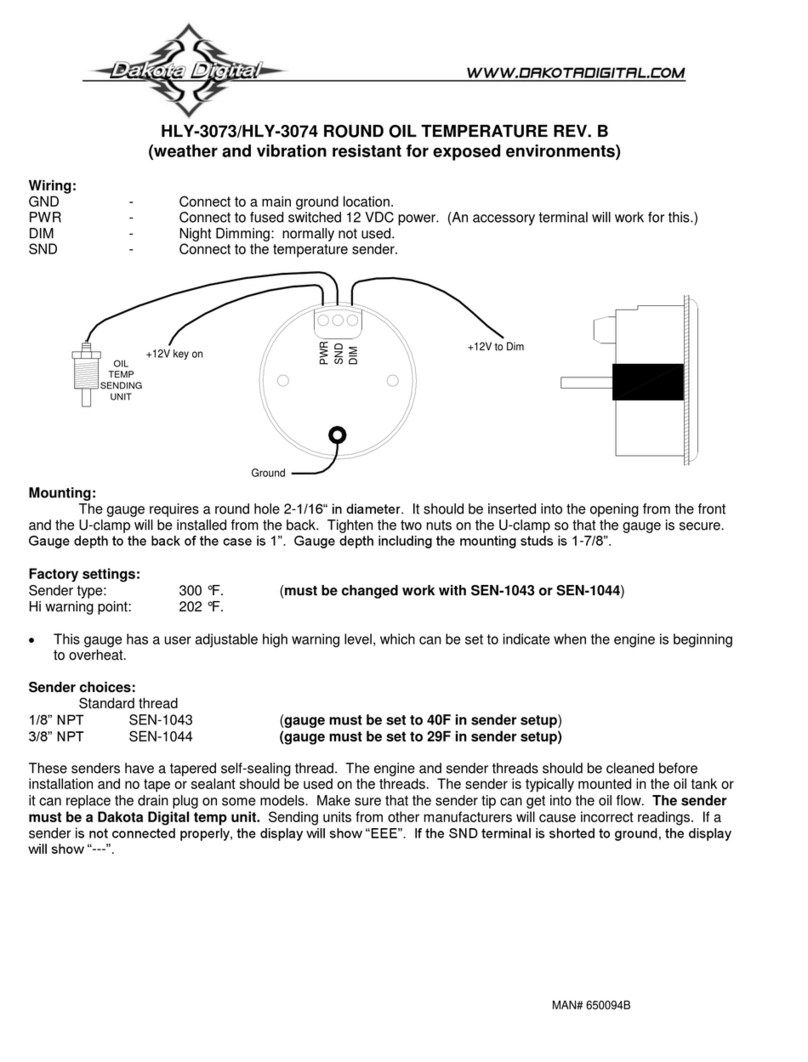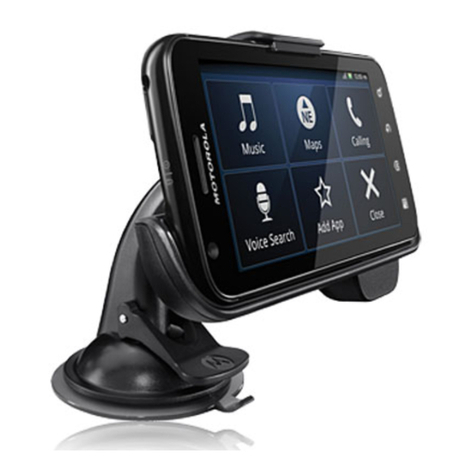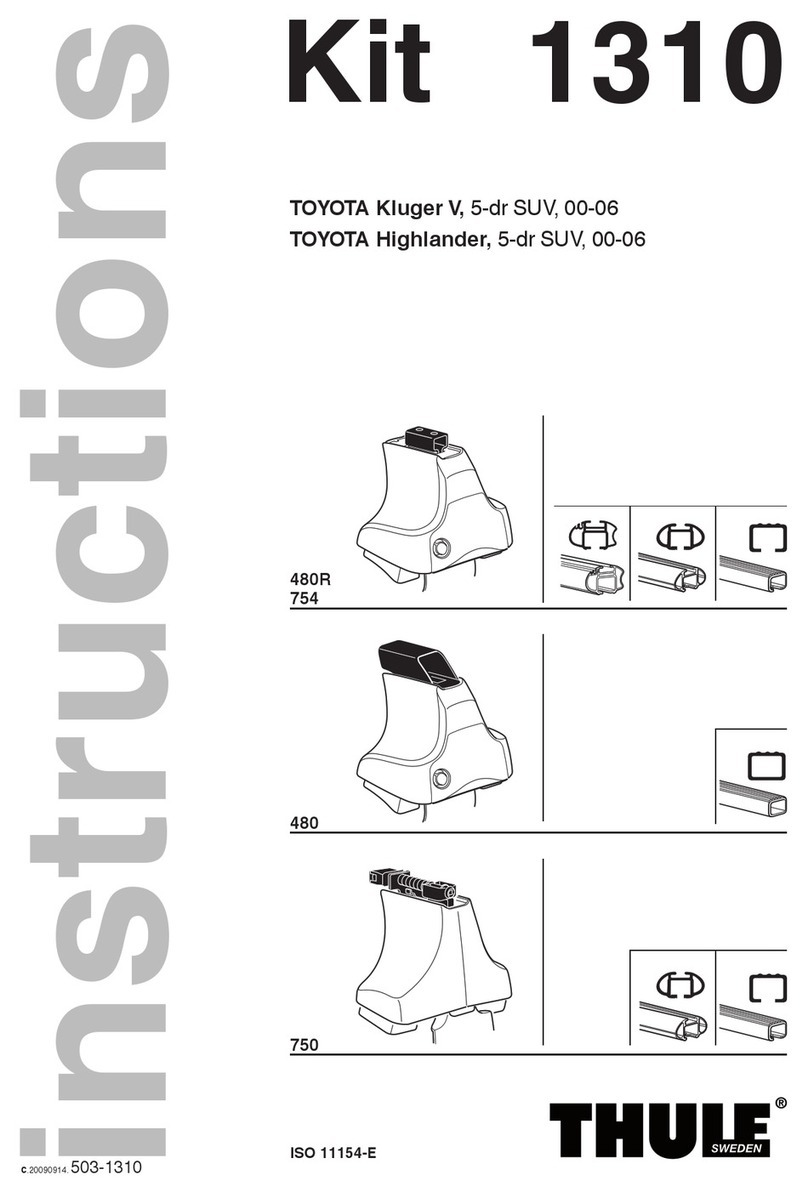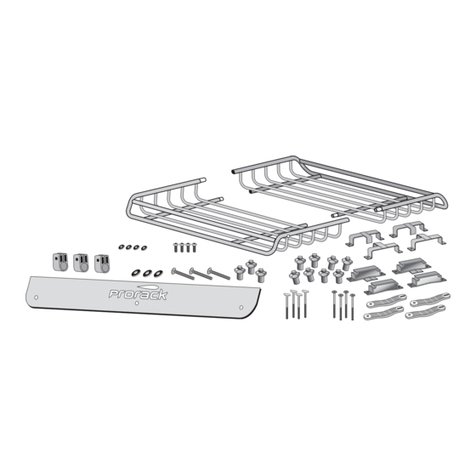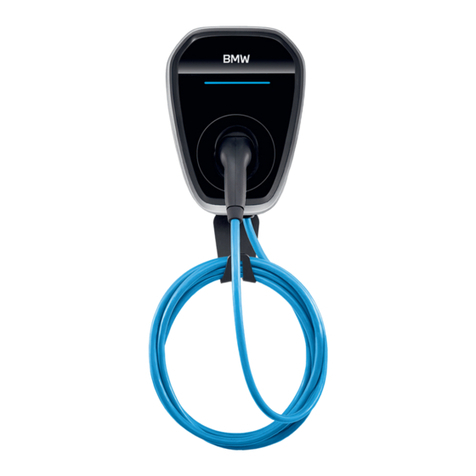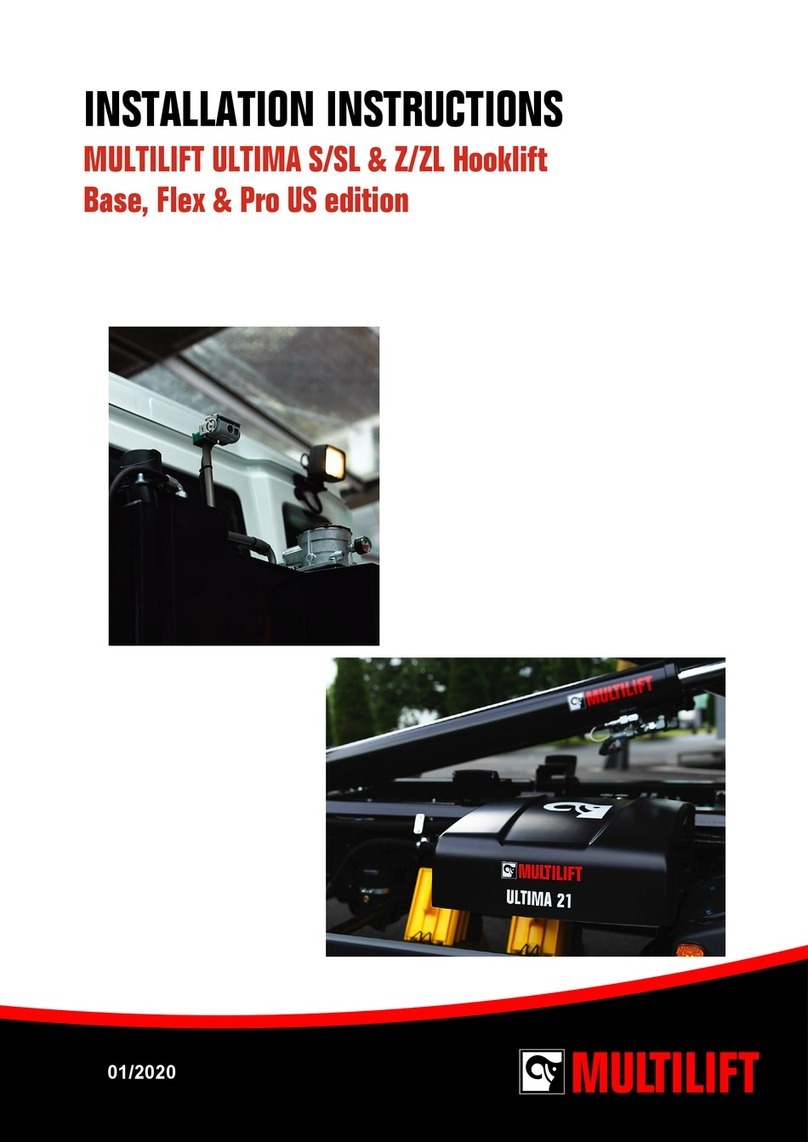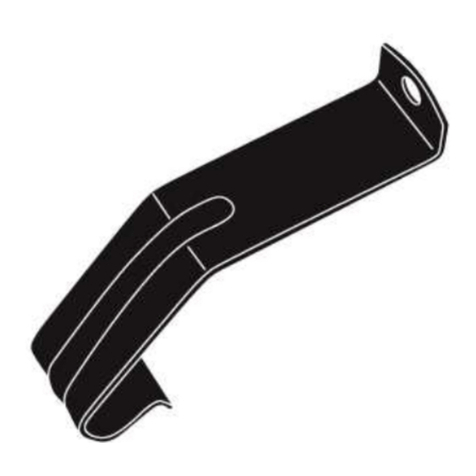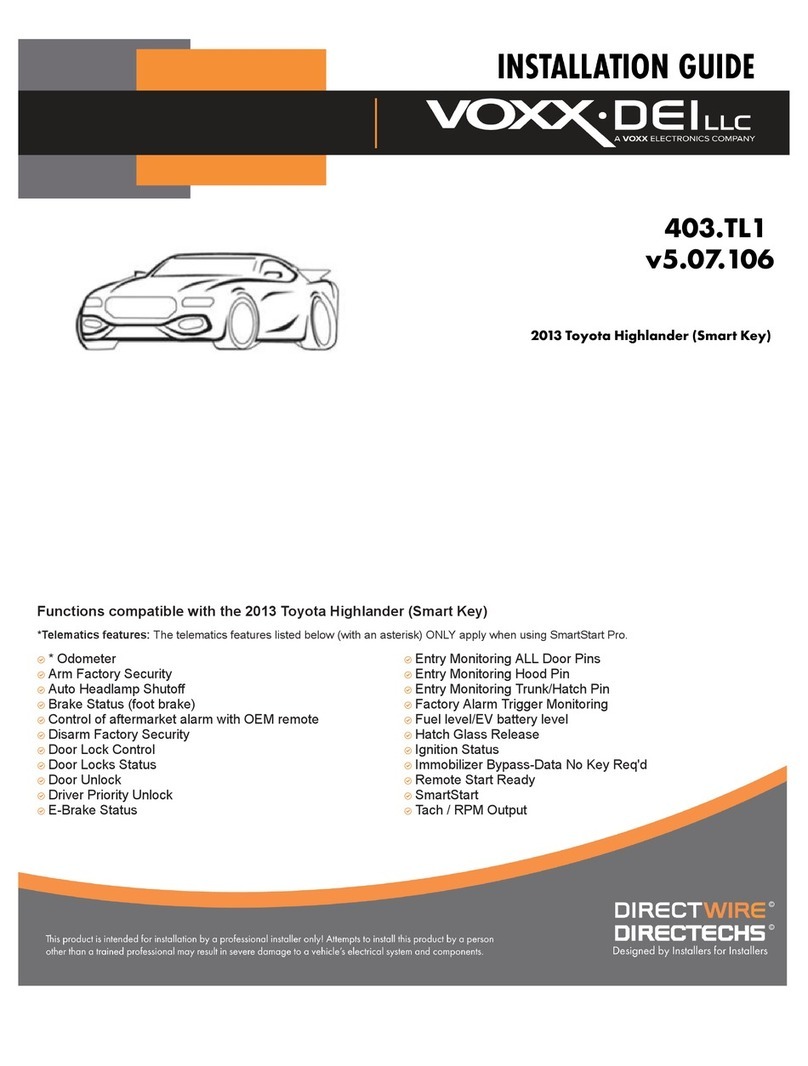EMX LP D-TEK User manual

LP D-TEK
Vehicle Loop Detector
Operating Instructions

We have designed the new LP D-TEK vehicle loop detector with the following objectives in mind:
1. Low current consumption, maximum 9 mA current draw in fail safe or fail secure.
2. All the controls are accessible from the outside for easy installation and operation.
3. Integral loop conditioner is provided, to enable detector operation with marginal loops.
4. Provide all the features and controls necessary for a variety of applications.
5. Use metal housing for maximum durability and RF blocking.
6. Provide maximum surge protection on all inputs and outputs of the detector.
7. Compact package to allow easy installation into small operator housings.
We took extra care to achieve and exceed these objectives. For example the controls are divided
into two groups. The group on the front of the detector is for basic operation and the group on the
back of the detector is for advanced settings. This way the more advanced settings are not visible
to the casual user.
There is no skimping on the quality in the D-TEK detector. The housing is made from aircraft
quality anodized aluminum. All the switches have gold plated contacts and are sealed for
protection. The detector is protected by easily replaceable fuse, snubbing circuitry on the relay
contacts, metal oxide varistor on the power input and triple protection on the loop input.
The D-TEK features are extensive and they include full loop diagnostics with frequency counter, 10
sensitivity settings, delay and extend features, "fail safe" and "fail secure" operation, automatic
sensitivity boost, pulse or two presence relay operation and more.
Operation Information
Detector Connections
Pin Function Harness
1 Power White 12 -24 Volts DC
2 Power Black 12 – 24 Volts DC
3 Relay 2 N.O Orange
4 Ground Green
5 Presence Relay Comm. Yellow
6 Presence Relay N.O. Blue
7 Loop Gray
8 Loop Brown
9 Relay 2 Comm. Red
10 Presence Relay N.C. Pink
11 Relay 2 N.C. Violet
Note: Functions on pins 6 and 10 are reversed if DIP 4 is set to OFF "Fail Secure"
operation

Front Indicators
1. Green Led is ON - the detector is powered.
2. Red Led is ON - the detector detected a vehicle
3. Green Led is Blinking - the loop failed and is shorted or disconnected
4. Green Led is Blinking with two consecutive fast blinks - the loop failed in the past and
now is working correctly.
5. Red Led is Blinking at the start of a vehicle detection - the Filter function is ON
6. Red Led is Blinking at the end of a vehicle detection - the Extend function is ON
7. Red Led is Blinking during a vehicle detection - 4 minute limited presence time has
expired.
Note: Functions on pins 6 and 10 are reversed if DIP 4 is set to OFF
Front Controls
Reset This toggle switch when pushed momentarily down will reset the detector
Frequency Counter This toggle switch when pushed momentarily up will count the frequency on
the loop. This count is displayed by the Red Led blinks, each blink represents
frequency of 10K Hz. Count between 3 to 13 blinks confirms that the loop
detector is tuned to the loop.
Frequency This toggle switch controls the loop frequency. Set different frequencies on
adjacent loops. Verify frequencies with the frequency counter by counting the
Red Led blinks.
Back Controls
Sensitivity This rotary switch controls the detector sensitivity. During normal operation the
sensitivity level is set to 3 or 4.
DIP Switch Functions
DIP OFF ON
1 Pulse on Relay II Presence on Relay II
2 Pulse on detect Pulse on Un-detect
3 Constant presence 4 minute limited presence time
4 "Fail Secure" "Fail Safe"
5 Filter Off Filter On
6 ASB Off Automatic Sensitivity Boost On
7 Extend detect 6 seconds
8 Extend detect 3 seconds
When Dip 7 and 8 are in ON position the extend time is 9 seconds.
Warning: Do not use limited presence setting and / or "Fail Secure" setting for reversing gates,
doors or barriers.

DIP - Detector Functions
1. Presence function is provided always by the presence relay output on pins 5, 6, and 10.
These outputs are active when the detector detects a car. If there is a need for an
additional presence output the Relay 2 can be configured as a second presence output by
setting DIP 1 to ON position.
2. Pulse function is provided by the Relay 2 output on pins 3, 9, and 11. To obtain pulse on
Relay 2 set DIP 1 to OFF position. The pulse of about 0.5 second can be generated when
the car enters the loop or when it exits. To generate pulse on vehicle entry to the loop set
DIP 2 to OFF position. To generate pulse on vehicle exit from the loop set DIP 2 to ON
position.
3. The presence relay provides constant output as long as the car is detected on the loop. To
obtain constant presence time set DIP 3 to OFF position. In some applications limited
presence time is required. To obtain limited presence time of approximately 4 minutes set
DIP 3 to ON position. Be aware that the detector relay will be released after 4 minutes even
if the vehicle is still detected by the detector. This may by a serious hazard in applications
where gates, doors or barriers are reversed, therefore never use this option in these
applications.
4. When DIP 4 is set to ON position the detector works in "Fail Safe" mode of operation the
detector will issue a detect signal when a car is detected, loop is disconnected or shorted, or
when the power to the detector is interrupted. It is strongly recommended to use the
detector in this mode.
In some application there is a need to ignore the loop or power failures and only to
provide the detect signal when a car is detected on the loop. To ignore loop or power
failures set the detector to "Fail Secure" by setting DIP 4 to OFF position. Do not use this
setting for application where gates, doors or barriers have to be reversed.
Note: Functions on pins 6 and 10 are reversed if DIP 4 is set to OFF
5. In some applications it is necessary to filter out short detections such as cross traffic or
short burst of radio frequency such as keying of a CB transmitter. To ignore these short
detections set DIP 5 to ON position. This will cause any detection that is shorter than 2
seconds to be ignored.
6. To increase detection height when detecting high bed vehicles set DIP 6 to ON position.
This setting will cause the sensitivity to automatically increase once the front axle of the
truck is detected. The sensitivity will go back to the normal level once the truck left the loop.
7. To extend the presence output for 6 seconds after the vehicle left the loop set DIP 7 to ON
position.
8. To extend the presence output for 3 seconds after the vehicle left the loop set DIP 8 to ON
position.
Note: If DIP 7 and DIP 8 are set to ON position the presence output will be extended 9 seconds
after the vehicle left the loop.

Troubleshooting
Symptom Possible Cause Correction
Green indicator is not ON No input voltage 1. Check voltage on pins 1 and 2.
2. Replace internal fuse
3. Check wiring to detector
Green indicator flashes Loop wire shorted or
disconnected 1. Check loop resistance on pins 7 and
8 it should be less than 5 ohms
and more than 0.5 ohms.
Green indicator flashes with
two consecutive fast blinks Loop wire was temporarily
shorted or disconnected 1. Check loop resistance on pins 7 and
8 while driving over the loop it should
be less than 5 ohms and more than 0.5
ohms. The reading should be steady.
Detector stays in detect
mode after the car left the
loop and fails to un-detect.
1. Faulty loop
2. Poorly crimped terminals
3. Loose connections
1. Perform megger test between loop
lead and ground the reading should be
larger than 100 mega ohms.
2. Check that loop is tightly connected
to proper terminals
3. Check that splices are tightly
soldered and sealed against moisture.
Detector detects
intermittently even when
there is no car on the loop.
1. Faulty loop
2. Poorly crimped terminals
3. Loose connections
4. Cross-talk between
adjacent loop detectors
1. Perform megger test between loop
lead and ground the reading should be
larger than 100 mega ohms.
2. Check that loop is tightly connected
to proper terminals
3. Check that splices are tightly
soldered and sealed against moisture.
4. Set adjacent loops on different
frequencies.

Technical Specifications
Power: 12 – 24 Volts DC
Current draw 9 mAmaximum in fail safe or fail secure mode
Temperature: -40F to + 180F
Environmental Protection: Circuit board is conformal coated
Enclosure: Extruded anodized aluminum, Height = 3.25 inches 83 mm
Width = 2.56 inches 40 mm
Depth = 3.65 inches 90 mm
Output Relays: 1A @ 30VDC
Connector: 86CP11 compatible with 11pin Octal DIN rail mountable socket or
wire harness
Surge Protection: The detector is protected with neon discharge lamps, Zener diodes
and surge arrestors.
Loop Input: Transformer isolated
Grounded Loop: The loop isolation transformer allows operation with poor quality
loops.
Loop Inductance Range: 20 to 2000 micro-henries with Q factor of 5 or higher.
Tuning: Detector automatically tunes to the loop after power application or
reset.
Tracking: Detector automatically tracks and compensates for environmental
changes
Power Indicator: Green LED solid light indicates power
Loop Failure Indicator: Green LED blinks indicates loop problem
Loop Failure Memory: Green LED blinks with fast consecutive blinks indicates past loop
problem that healed.
Detect Indicator: Red LED solid light indicates detection
Extend Indicator: Red LED blinks after a car left the loop indicates time extend
feature
Sensitivity: is set by 10 position rotary switch
Frequency: is set three position toggle switch
Infinite Presence Mode: DIP switch selectable presence
Limited 4 Minutes
Presence Time: DIP switch selectable
Second Presence Relay: DIP switch selectable
Pulse On Exit / Entry: DIP switch selectable
Fail Safe / Secure: DIP switch selectable
Filter: DIP switch selectable 2 seconds
Extended Detection: DIP switch selectable 3, 6 and 9 seconds


Revision 1.1
Table of contents
Popular Automobile Accessories manuals by other brands

BrandMotion
BrandMotion 9002-7803 installation instructions
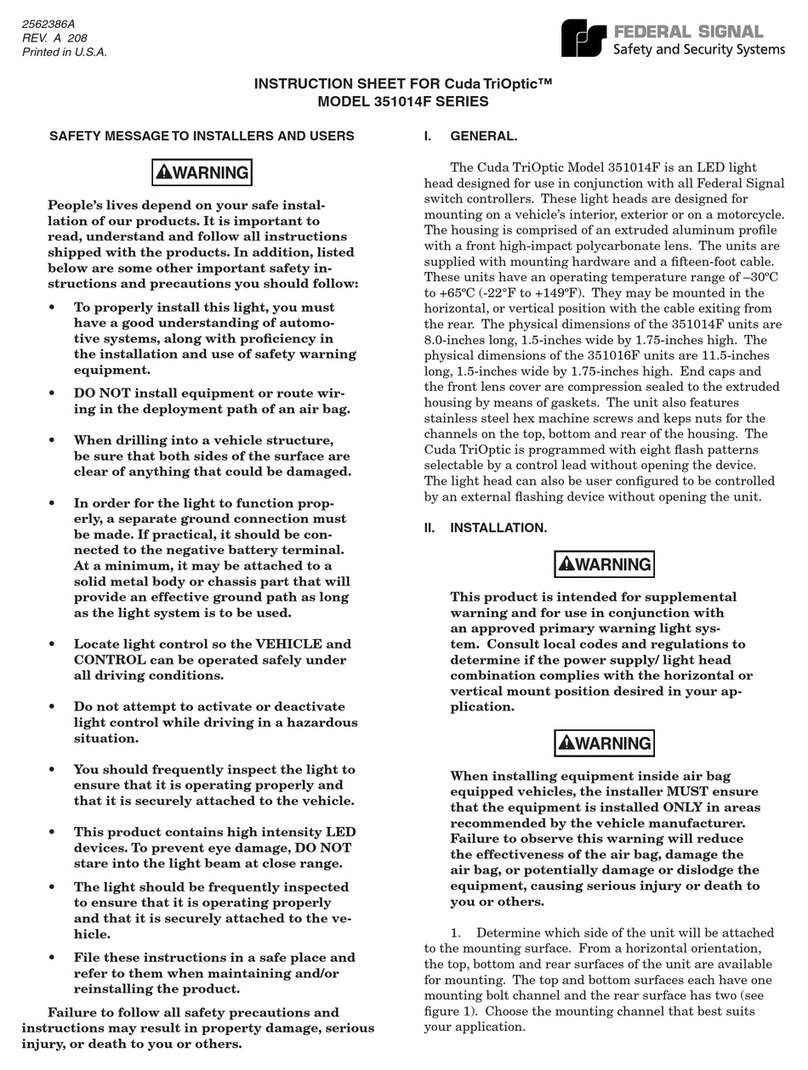
Federal Signal Corporation
Federal Signal Corporation Cuda TriOptic 351014F Series instruction sheet

Westfalia
Westfalia 305 168 Installation and operating instructions

ZAERO DESIGN
ZAERO DESIGN EVO-1 installation manual
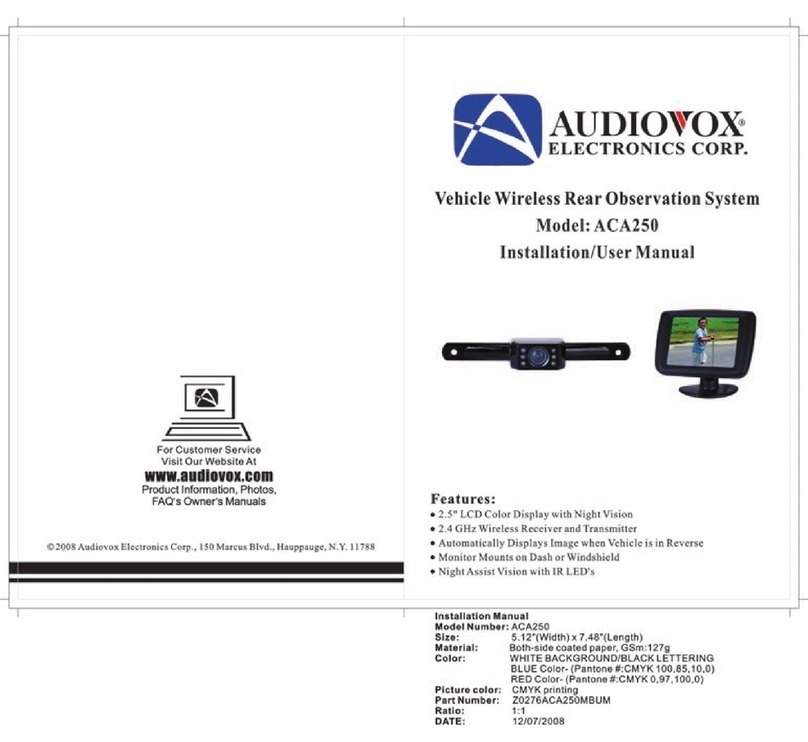
Audiovox
Audiovox ACA250 Installation and user manual

Prorack
Prorack PR3097 installation instructions
